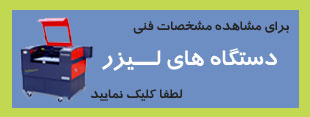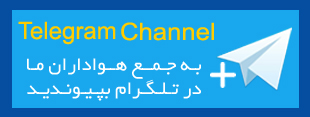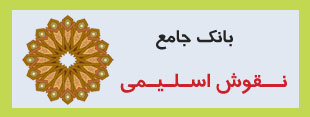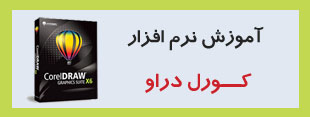Excimer laser
Edited By: www.Bode4.com
An excimer laser (sometimes more correctly called an exciplex laser) is a form of ultraviolet laser which is commonly used in the production of microelectronic devices (semiconductor integrated circuits or “chips”), eye surgery, and micromachining.
Terminology
The term excimer is short for 'excited dimer', while exciplex is short for 'excited complex.' Most "excimer" lasers are of the noble gas halide type, for which the term excimer is strictly speaking a misnomer (since a dimer refers to a molecule of two identical or similar parts): The correct but less commonly used name for such is exciplex laser.
History
The first excimer laser was invented in 1970 by Nikolai Basov, V. A. Danilychev and Yu. M. Popov, at the Lebedev Physical Institute in Moscow, using a xenon dimer (Xe2) excited by an electron beam to give stimulated emission at 172 nm wavelength. A later improvement, developed by many groups in 1975 was the use of noble gas halides (originally XeBr). These groups include the Avco Everett Research Laboratory, Sandia Laboratories, the Northrop Research and Technology Center, and the United States Government's Naval Research Laboratory who also developed a XeCl Laser that was excited using a microwave discharge.
Construction
An excimer laser typically uses a combination of a noble gas (argon, krypton, or xenon) and a reactive gas (fluorine or chlorine). Under the appropriate conditions of electrical stimulation and high pressure, a pseudo-molecule called an excimer (or in the case of noble gas halides, exciplex) is created, which can only exist in an energized state and can give rise to laser light in the ultraviolet range.
Operation
Laser action in an excimer molecule occurs because it has a bound (associative) excited state, but a repulsive (dissociative) ground state. This is because noble gases such as xenon and krypton are highly inert and do not usually form chemical compounds. However, when in an excited state (induced by an electrical discharge or high-energy electron beams, which produce high energy pulses), they can form temporarily-bound molecules with themselves (dimers) or with halogens (complexes) such as fluorine and chlorine. The excited compound can give up its excess energy by undergoing spontaneous or stimulated emission, resulting in a strongly repulsive ground state molecule which very quickly (on the order of a picosecond) dissociates back into two unbound atoms. This forms a population inversion.
Wavelength determination
The wavelength of an excimer laser depends on the molecules used, and is usually in the ultraviolet:
|
Excimer |
Wavelength |
Relative Power |
|
Ar2* |
126 nm |
|
|
Kr2* |
146 nm |
|
|
Xe2* |
172 & 175 nm |
|
|
ArF |
193 nm |
60 |
|
KrF |
248 nm |
100 |
|
XeBr |
282 nm |
|
|
XeCl |
308 nm |
50 |
|
XeF |
351 nm |
45 |
|
KrCl |
222 nm |
25 |
Excimer lasers, such as XeF and KrF, can also be made slightly tunable using a variety of prism and grating intracavity arrangements.
Repetition rate
Excimer lasers are usually operated with a pulse repetition rate of around 100 Hz and a pulse duration of ~10 ns, although some operate at pulse repetition rates as high as 8 kHz and some have pulsewidths as large as 200 ns.
For electric discharge pump see: Nitrogen laser.
Major applications
The UV light from an excimer laser is well absorbed by biological matter and organic compounds. Rather than burning or cutting material, the excimer laser adds enough energy to disrupt the molecular bonds of the surface tissue, which effectively disintegrates into the air in a tightly controlled manner through ablation rather than burning. Thus excimer lasers have the useful property that they can remove exceptionally fine layers of surface material with almost no heating or change to the remainder of the material which is left intact. These properties make excimer lasers well suited to precision micromachining organic material (including certain polymers and plastics), or delicate surgeries such as eye surgery LASIK.
Excimer lasers are widely used in high-resolution photolithography machines, one of the critical technologies required for microelectronic chip manufacturing. Current state-of-the-art lithography tools use deep ultraviolet (DUV) light from the KrF and ArF excimer lasers with wavelengths of 248 and 193 nanometers (the dominant lithography technology today is thus also called “excimer laser lithography”), which has enabled transistor feature sizes to shrink below 45 nanometers. Excimer laser lithography has thus played a critical role in the continued advance of the so-called Moore’s law for the last 20 years.
The most widespread industrial application of excimer lasers has been in deep-ultraviolet photolithography, a critical technology used in the manufacturing of microelectronic devices (i.e., semiconductor integrated circuits or “chips”). Historically, from the early 1960s through the mid-1980s, mercury-xenon lamps had been used in lithography for their spectral lines at 436, 405 and 365 nm wavelengths. However, with the semiconductor industry’s need for both higher resolution (to produce denser and faster chips) and higher throughput (for lower costs), the lamp-based lithography tools were no longer able to meet the industry’s requirements. This challenge was overcome when in a pioneering development in 1982, deep-UV excimer laser lithography was proposed and demonstrated at I.B.M. by K. Jain. With phenomenal advances made in equipment technology in the last two decades, and today microelectronic devices fabricated using excimer laser lithography totaling $400 billion in annual production, it is the semiconductor industry view that excimer laser lithography has been a crucial factor in the continued advance of Moore’s law, enabling minimum features sizes in chip manufacturing to shrink from 0.5 micrometer in 1990 to below 45 nanometers in 2010. This trend is expected to continue into this decade for even denser chips, with minimum features approaching 10 nanometers. From an even broader scientific and technological perspective, since the invention of the laser in 1960, the development of excimer laser lithography has been highlighted as one of the major milestones in the 50-year history of the laser.
The high-power ultraviolet output of excimer lasers also makes them useful for surgery (particularly eye surgery) and for dermatological treatment. Excimer laser light is typically absorbed within the first billionth of a meter (nanometer) of tissue. In 1980 - 1983, Samuel Blum was working with Rangaswamy Srinivasan and James Wynne at IBM’s T. J. Watson Research Center when they observed the effect of the ultraviolet excimer laser on biological materials. Intrigued, they investigated further, finding that the laser made clean, precise cuts that would be ideal for delicate surgeries. This resulted in a fundamental patent and Blum, Srinivasan, and Wynne were elected to the National Inventors Hall of Fame in 2002. Subsequent work introduced the excimer laser for use in angioplasty. Kansas State University pioneered the study of the excimer laser which made LASIK surgery possible. Xenon chloride (308 nm) excimer lasers can also treat a variety of dermatological conditions including psoriasis, vitiligo, atopic dermatitis, alopecia areata and leukoderma.
For applications in deep-UV photolithography for semiconductor chip manufacturing, excimer lasers have been highly industrialized, making them extremely reliable and easily serviceable. However, as light sources, excimer lasers are generally large in size, which is a disadvantage in their medical applications, although their sizes are rapidly decreasing with ongoing development.
Excimer lasers are also widely used in numerous fields of scientific research, both as primary sources and, particularly the XeCl laser, as pump sources for tunable dye lasers, mainly to excite laser dyes emitting in the blue-green region of the spectrum.
References
- Basov, N. G. et al., Zh. Eksp. Fiz. i Tekh. Pis’ma. Red. 12, 473(1970).
- Basting, D. et al., History and future prospects of excimer laser technology, 2nd International Symposium on Laser Precision Microfabrication, pages 14-22.
- Ewing, J. J. and Brau, C. A. (1975), Laser action on the 2 Sigma+ 1/2--> 2 Sigma+ 1/2 bands of KrF and XeCl, Appl. Phys. Lett., vol. 27, no. 6, pages 350-352.
- Tisone, G. C. and Hays, A. K. and Hoffman, J. M. (1975), 100 MW, 248.4 nm, KrF laser excited by an electron beam, Optics Comm., vol. 15, no. 2, pages 188-189.
- Ault, E. R. et al. (1975), High-power xenon fluoride laser, Applied Physics Letters 27, p. 413.
- Searles, S. K. and Hart, G. A., (1975), Stimulated emission at 281.8 nm from XeBr, Applied Physics Letters 27, p. 243.
- "High Efficiency Microwave Discharge XeCl Laser", C. P. Christensen, R. W. Waynant and B. J. Feldman, Appl. Phys. Lett. 46, 321 (1985).
- Microwave discharge resulted in much smaller footprint, very high pulse repetition rate excimer laser, commercialized under U. S. Patent 4,796,271 by Potomac Photonics, Inc.
- IUPAC, Compendium of Chemical Terminology, 2nd ed. (the "Gold Book") (1997). Online corrected version: (2006–) "excimer laser".
- Basting, D. and Marowsky, G., Eds., Excimer Laser Technology, Springer, 2005.
- F. J. Duarte (Ed.), Tunable Lasers Handbook (Academic, New York, 1995) Chapter 3.
- Jain, K. et al., “Ultrafast deep-UV lithography with excimer lasers”, IEEE Electron Device Lett., Vol. EDL-3, 53 (1982): http://ieeexplore.ieee.org/xpl/freeabs_all.jsp?arnumber=1482581
- Polasko et al., “Deep UV exposure of Ag2Se/GeSe2utilizing an excimer laser”, IEEE Electron Device Lett., Vol. 5, p. 24(1984): http://ieeexplore.ieee.org/xpls/abs_all.jsp?arnumber=1484194&tag=1
- Jain, K. “Excimer Laser Lithography”, SPIE Press, Bellingham, WA, 1990.
- Lin, B. J., "Optical Lithography", SPIE Press, Bellingham, WA, 2009, p. 136.
- La Fontaine, B., “Lasers and Moore’s Law”, SPIE Professional, Oct. 2010, p. 20. http://spie.org/x42152.xml
- Basting, D., et al., “Historical Review of Excimer Laser Development,” in Excimer Laser Technology, D. Basting and G. Marowsky, Eds., Springer, 2005.
- American Physical Society / Lasers / History / Timeline: http://www.laserfest.org/lasers/history/timeline.cfm
- SPIE / Advancing the Laser / 50 Years and into the Future: http://spie.org/Documents/AboutSPIE/SPIE%20Laser%20Luminaries.pdf
- U.K. Engineering & Physical Sciences Research Council / Lasers in Our Lives / 50 Years of Impact: http://www.stfc.ac.uk/Resources/PDF/Lasers50_final1.pdf
- US 4784135, "Far ultraviolet surgical and dental procedures", issued 1988-10-15
- R. Linsker, R. Srinivasan, J. J. Wynne, and D. R. Alonso (1984). "Far-ultraviolet laser ablation of atherosclerotic lesions". Lasers Surg. Med. 4 (1): 201–206.
- Duarte, F. J. and Hillman, L. W. (Eds.), Dye Laser Principles (Academic, New York, 1990) Chapter 6.
- Tallman, C. and Tennant, R., Large-scale excimer-laser-pumped dye lasers, in High Power Dye Lasers, Duarte, F. J. (Ed.) (Springer, Berlin, 1991) Chapter 4.









































